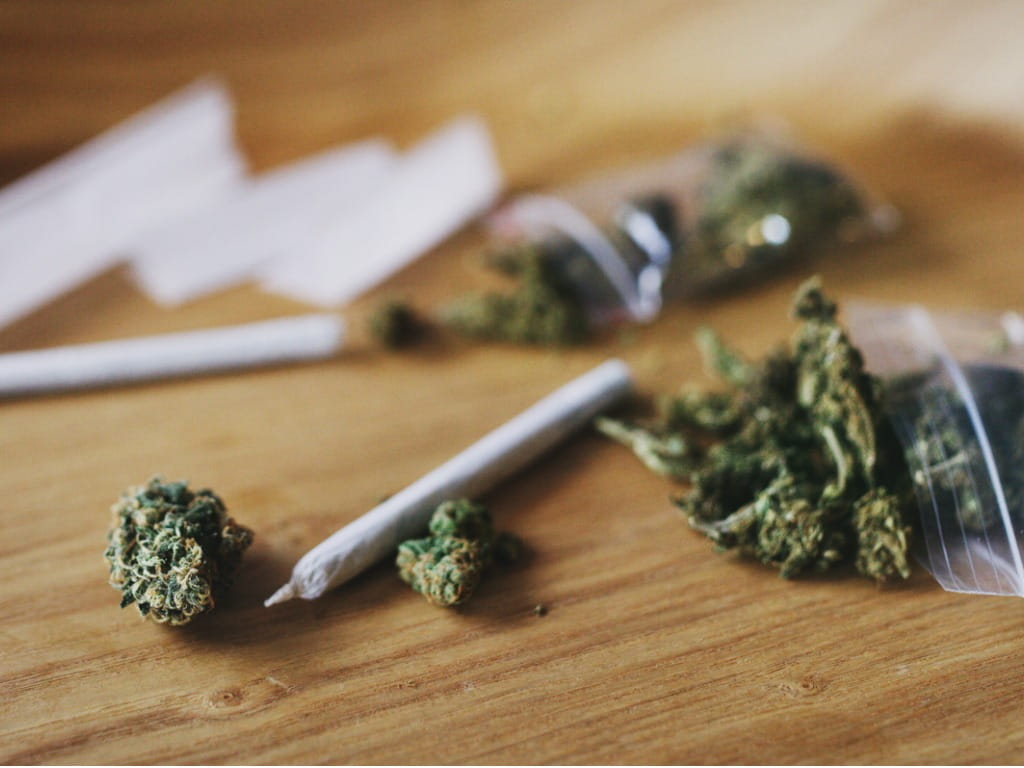Is it Dangerous to Smoke a Joint or Use a Bong?

The Bottom Line
Cannabis is a popular drug, but it is associated with harmful health effects. Devices used to smoke cannabis, including bongs and rolling papers, may also cause health problems and should be used with caution.

The Full Story
Cannabis is the most commonly used illicit drug in the United States. While many states have legalized the medical and/or recreational use of cannabis, possession, sale, and use of the drug remains illegal on a federal level. Cannabis can be smoked, vaped, or consumed through edible formulations or tinctures.
Many people use cannabis by smoking it. Devices used to smoke cannabis, including rolling papers and bongs, can be purchased in either brick-and-mortar or online retailers. Instructions available online detail how to make a do-it-yourself smoking pipe using a soda can.
While these methods represent different ways of smoking cannabis, they all result in users being exposed to the same drug. The technique of smoking cannabis is much different than that of smoking tobacco. Compared with smoking tobacco, cannabis smoking involves larger inhaled volumes, longer breath-holding, and a 40% increase in the amount of smoke inhaled. As a result, the user is exposed to more cannabis, compared with tobacco smoking, and is at a greater risk of unwanted or adverse health effects. Smoking cannabis may cause lung damage and mental health disorders. Children and unborn fetuses are likely more susceptible to the dangerous effects of cannabis smoke, so it’s recommended that pregnant women, and women trying to become pregnant, avoid use of cannabis products. In addition, the long-term health effects of chronic cannabis use are not entirely known.
Besides the health effects described above, there are other concerns associated with smoking cannabis, especially for people who use soda cans to smoke the drug. In the 1980’s and 1990’s, there were numerous reports of individuals who developed a syndrome characterized by difficulty walking, speech problems, abnormal muscle movements, and other unexpected symptoms after using heroin. These individuals had used heroin by “chasing the dragon” or inhaling the vapors of heroin that had been heated on aluminum foil. The cause of this syndrome, called “heroin-induced leukoencephalopathy”, remains unknown, but some researchers believe that it might have been caused by the inhalation of toxic byproducts of aluminum heating. Since soda cans are made from aluminum, the process of heating soda cans to smoke cannabis may result in increased inhalation of aluminum, possibly increasing the risk of leukoencephalopathy in people who use soda cans to smoke cannabis.
Rolling papers are also commonly used to smoke cannabis. Rolling papers may contain potentially poisonous heavy metals such as arsenic, cadmium, and mercury. In one study from 2019, bleached, fast-burning, and flavored rolling papers had the highest levels of heavy metal contamination. Since inhalation of heavy metals can cause significant health effects, use caution when using rolling papers, especially those products that are bleached, fast-burning, or flavored.
A water pipe, or bong, may also be used to smoke cannabis. Water pipes are used to inhale cannabis that has been heated and then passed through water to filter and cool it. Bongs can be constructed from glass or plastic materials. But heating plastic, such as through use of a water pipe, can result in the release BPA, phthalates, and other potentially dangerous components. BPA and phthalates are believed to be endocrine disruptors and exposure to these compounds may alter fertility. There is also some evidence that cannabis smoking through plastic bongs may increase the risk of severe lung injury due to inhalation of plastic byproducts. While the safest approach is to avoid using cannabis, glass bongs may be a safer alternative to plastic bongs.
If someone experiences unwanted or unexpected side effects after using cannabis products, contact Poison Control for expert advice. Get an immediate personalized recommendation online or call 1-800-222-1222. Both options are free, confidential, and available 24 hours a day.
Kelly Johnson-Arbor, MD
Medical Toxicologist
Poisoned?
Call 1-800-222-1222 or
Prevention Tips
- Do not use cannabis products if you are pregnant or trying to become pregnant.
- Keep all cannabis products away from children.
- Do not drive or operate machinery after using cannabis.
This Really Happened
A 19-year-old man, who smoked cannabis 10 times a day using a plastic bong, developed shortness of breath and a cough with bloody sputum. He was admitted to a hospital for further testing. A chest CT scan and other testing showed multiple abnormalities, and he and was diagnosed with a serious condition called alveolar hemorrhage. He was treated with steroids and oxygen, and his condition improved. He stopped using bongs to smoke cannabis. Two months later, he had no further symptoms and a repeat chest scan was normal.For More Information
Demystifying the Bong, One Myth at a Time (Healthline)
Marijuana (United States Drug Enforcement Administration)
What We Know About Marijuana (Centers for Disease Control and Prevention)
References
Tashkin DP. Pulmonary complications of smoked substance abuse. West J Med. 1990 May;152(5):525-30.
Tormoehlen LM. Toxic leukoencephalopathies. Psychiatr Clin North Am. 2013 Jun;36(2):277-92.
Poisoned?
Call 1-800-222-1222 or
Prevention Tips
- Do not use cannabis products if you are pregnant or trying to become pregnant.
- Keep all cannabis products away from children.
- Do not drive or operate machinery after using cannabis.
